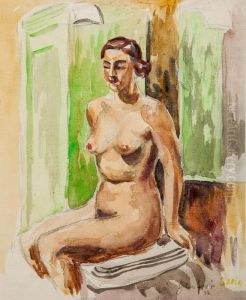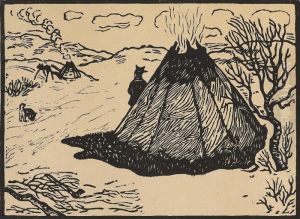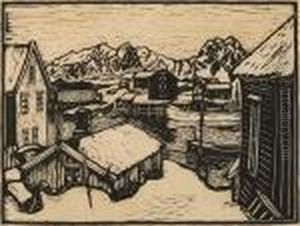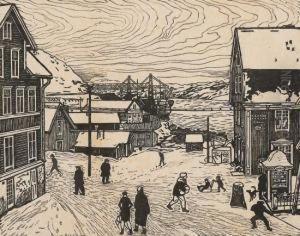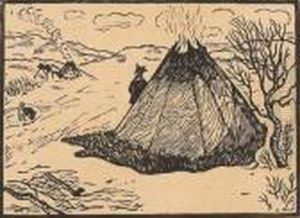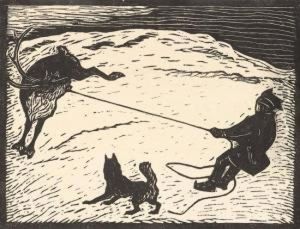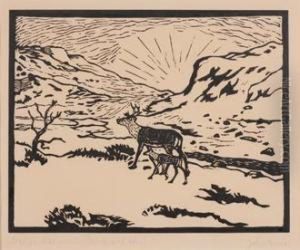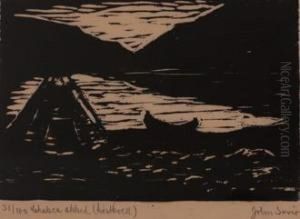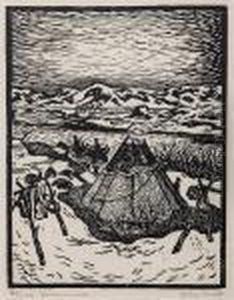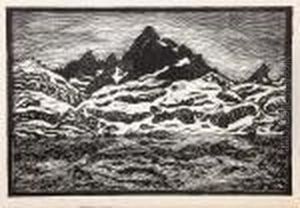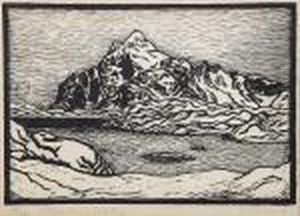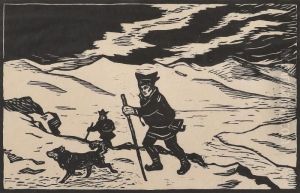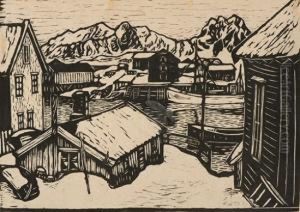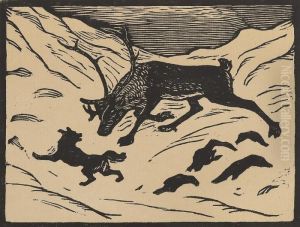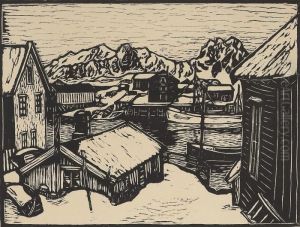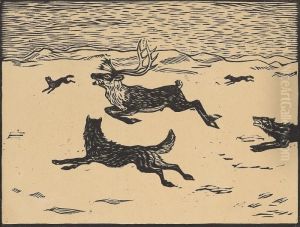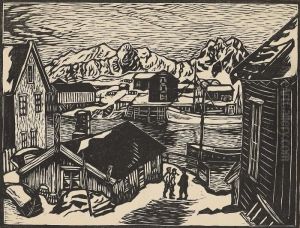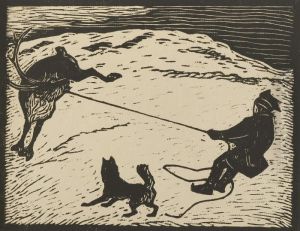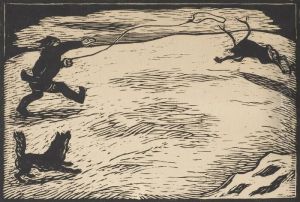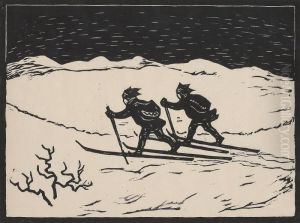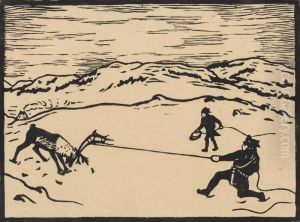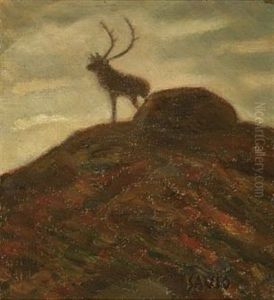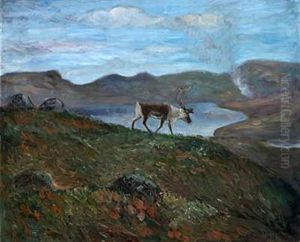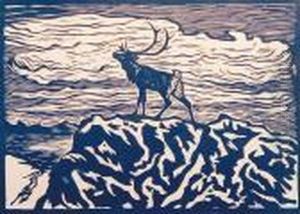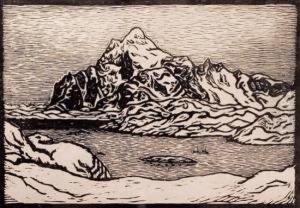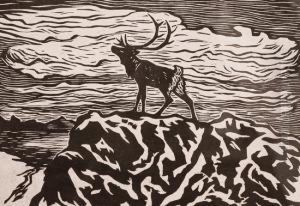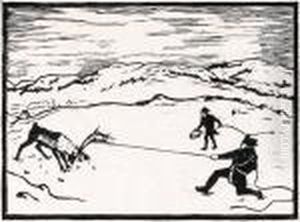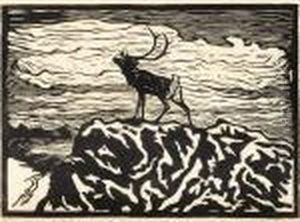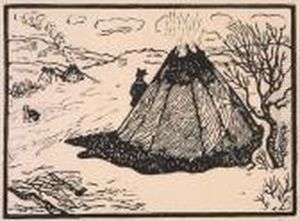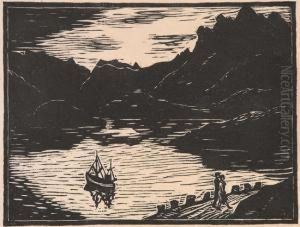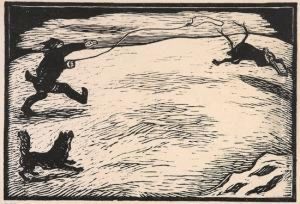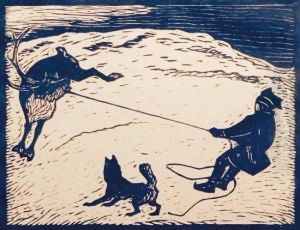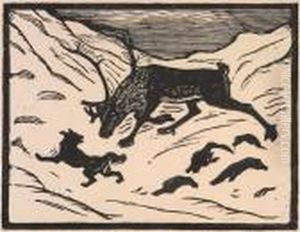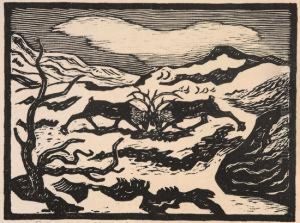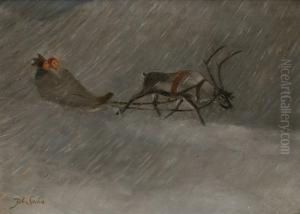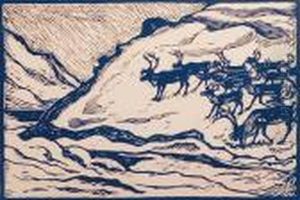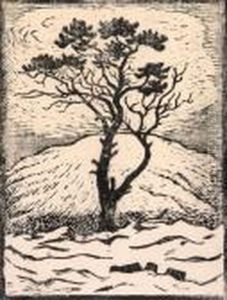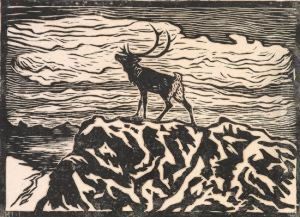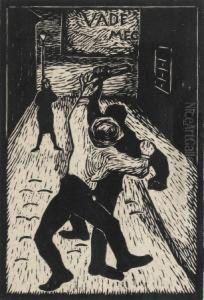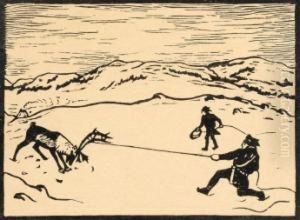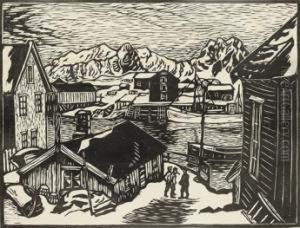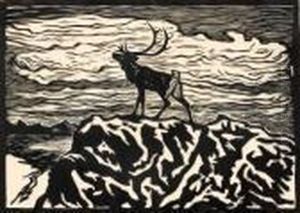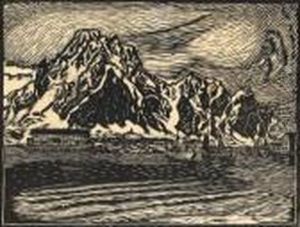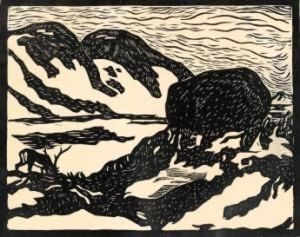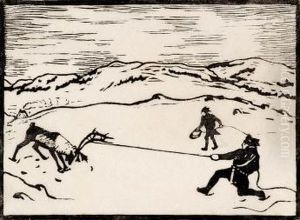John Savio Paintings
John Andreas Savio was a Norwegian-Sami visual artist known for his woodcuts and paintings that often reflected the life and landscapes of Northern Norway and the indigenous Sami people. Born on January 25, 1902, in Bugøyfjord in Sør-Varanger, Norway, Savio grew up in an area where the Norwegian and Sami cultures coexisted, which greatly influenced his artistic vision.
From an early age, Savio showed a talent for drawing, and despite the limited opportunities in his remote birthplace, he pursued an education in art. In the 1920s, he studied at the Statens håndverks- og kunstindustriskole (State School of Arts and Crafts) in Oslo. However, his time in the south was challenging, and he often felt alienated due to his background and the prevailing attitudes of the time towards the Sami people.
His work is characterized by a unique blend of modernist and expressionist styles, with a particular emphasis on depicting the hardships and resilience of the Sami people. Savio's woodcuts are notable for their bold lines and contrast, as well as a sense of movement and vitality. Despite his innovative approach to woodcutting, he received little recognition during his lifetime, and struggled with financial difficulties and health issues.
Tragically, John Savio's life and career were cut short when he died at the age of 36 on July 13, 1938, in Oslo. It was only posthumously that his art gained broader recognition, and today he is considered one of the pioneers of Sami visual arts. His legacy is an important testament to the cultural expression of the Sami, and his work continues to be exhibited and celebrated in Norway and internationally.
